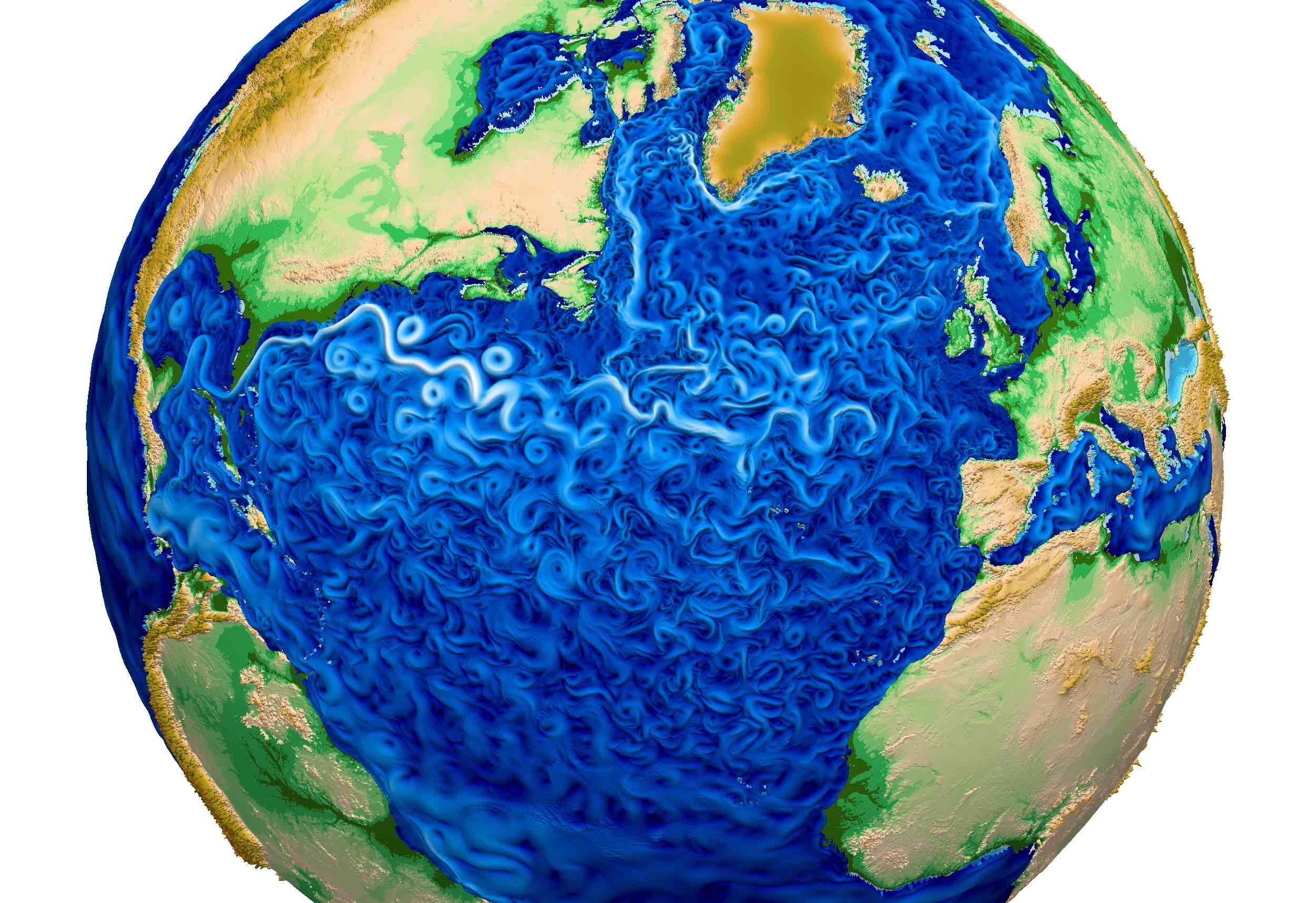About

The E3SM v1.0 included three new model components: Model for Prediction Across Scales (MPAS) Ocean, MPAS Sea Ice, and MPAS Land Ice.
The Energy Exascale Earth System Model (E3SM) Project is an ongoing, state-of-the-science Earth system modeling, simulation, and prediction project that optimizes the use of DOE laboratory resources to meet the science needs of the nation and the mission needs of DOE. In this context, “laboratory resources” include current and future personnel, programs, and facilities. Collectively, they represent a unique combination of proficiencies in science, engineering, leadership computing, and information technologies—the expertise required to construct, maintain, and advance an Earth system modeling capability needed by the country and DOE.
Phase 1 (2014-2018)
E3SM Phase 1 developed the first version (v1) of the E3SM model, featuring a unique capability of regional refinement in all of its component models for multi-resolution modeling. The model pushed the limits of resolution, process representations, and computing technology.
Phase 2 (2018-2022)
E3SM Phase 2 expanded and extended this work by further exercising the low- and high-resolution versions of v1, developing v2 that featured new capabilities in coupling natural and human systems and routine use of regional refinement over North America to more explicitly address DOE’s need in understanding Earth system changes affecting U.S. energy-sector decisions. Phase 2 invested in major new developments of science components, software, and algorithms for next-generation models to be used in future simulation campaigns (v3-4), including pushing the envelope in terms of model resolution beyond the current hydrostatic limit in the atmosphere. Phase 2 also significantly improved model performance and infrastructure. During this period, the coupled system ran efficiently on the most powerful DOE High-Performance Computational Facility computers.
Phase 3 (2023-)
The E3SM Project will achieve its long-term goal of completing actionable science simulation campaigns with a state-of-the-art Earth system model executing on Office of Science Exascale Computing systems.
Phase 3 (2023-2026) priorities are to
- improve the model’s scientific accuracy through substantial reduction of large and persistent biases,
- undertake new developments necessary to address the version 3 (v3) and version 4 (v4) science questions,
- utilize pre-Exascale and Exascale heterogeneous computing systems at Office of Science Leadership Computing Facilities (LCF)
- enable the broader use and extensible development of the E3SM model by DOE-funded scientists.
E3SMv3 implements the three-pronged strategy for advancing Earth system modeling for actionable science: applying high-resolution models, representing human–Earth interactions, and quantifying uncertainty for our science themes of Water Cycle Changes and Impacts, Human-Earth System Feedbacks, and Polar Processes, Sea-Level Rise and Coastal Impacts.
The project’s organization continues to evolve. E3SM established parallel tracks to develop and release v3 in 2023 and v4 in 2026. The project defined component model groups to streamline the development process and created a coupled simulation group to finalize the core model. The component groups provide access points for E3SM “Ecosystem” projects to contribute new capabilities to future model versions. Additionally, the project is improving documentation, communication, and outreach to further promote collaboration and use of the E3SM system for DOE-supported research.


